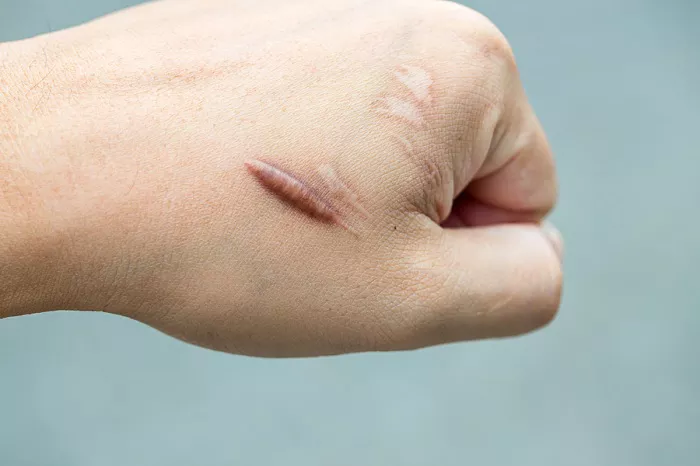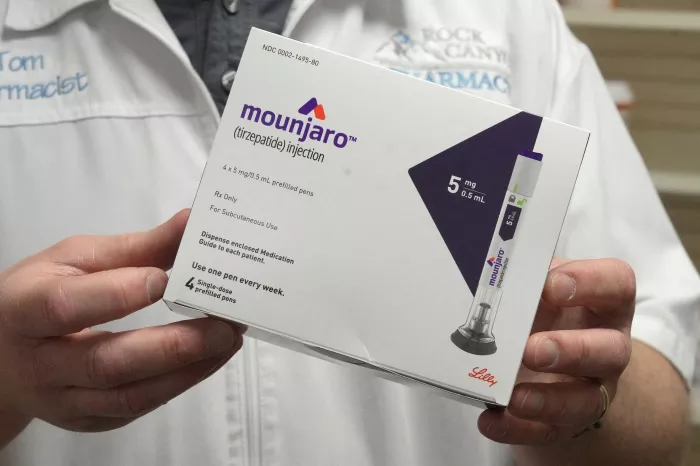The quest for scar removal has led many individuals to explore various remedies, and one common household product that often enters the conversation is Vaseline. Also known as petroleum jelly, Vaseline is celebrated for its moisturizing properties, but can it truly remove scars? In this comprehensive guide, we delve into the science behind scars, the properties of Vaseline, and the evidence supporting or debunking the notion that Vaseline can be a scar removal solution.
Understanding the Nature of Scars
Before evaluating the efficacy of Vaseline in scar removal, it’s crucial to understand the nature of scars. Scars are the result of the skin’s natural healing process in response to injury, surgery, or other forms of trauma. The body produces collagen fibers to repair the damaged tissue, and the appearance and texture of the scar depend on factors such as the depth and type of the wound, genetics, and the individual’s overall health.
While scars are a natural part of the healing process, their visibility and texture can be a source of concern for some. Scar management often involves techniques to optimize the healing environment, influence collagen formation, and moisturize the skin.
The Role of Moisturization in Scar Management
Moisturization is a fundamental aspect of scar management, aiming to create an environment that supports optimal healing. Properly moisturized skin is more supple and less prone to dryness or irritation, factors that can contribute to improved scar appearance. In this context, the moisturizing properties of Vaseline come into focus.
Vaseline’s Moisturizing Properties
Vaseline, composed primarily of petroleum jelly, is renowned for its occlusive properties. It forms a protective barrier on the skin, preventing moisture loss and creating a seal that can enhance hydration. The application of Vaseline to scars is believed to contribute to a more favorable healing environment by reducing dryness and promoting a supple texture.
However, it’s essential to recognize that while moisturization is a crucial element of scar management, it alone may not completely eliminate scars. The impact of Vaseline on scar appearance is often influenced by various factors, including the age and type of the scar, skin type, and individual response to the product.
Scientific Perspective
Scientific research on the specific efficacy of Vaseline in scar removal is limited, and existing studies often focus on its general moisturizing properties. While Vaseline is recognized for its ability to create a barrier that reduces water loss from the skin, its direct impact on scar characteristics is less explored.
A study published in the “International Wound Journal” in 2012 assessed the effectiveness of various topical agents, including petroleum jelly, in preventing scars after surgical incisions. The study concluded that there was no significant difference in scar outcomes between the group using petroleum jelly and the control group.
It’s important to note that this study specifically addressed the prevention of scars after surgery rather than the removal of existing scars. The scientific evidence regarding Vaseline’s role in actively removing scars is limited, and more research is needed to draw definitive conclusions.
Addressing Old Wives’ Tales
The internet is rife with anecdotal accounts and home remedies, contributing to a wealth of information, some of which may be misleading. One common belief is that applying Vaseline to a scar can make it fade or disappear over time. While personal experiences vary, it’s crucial to distinguish between anecdotal evidence and scientifically validated information.
The Myth of Scar Dissolution
Despite its widespread use and popularity in skincare, Vaseline has limitations when it comes to scar removal. Scars, especially older ones that have fully matured, are often permanent alterations to the skin’s structure. While the moisturizing properties of Vaseline can contribute to improved texture and appearance, expecting it to dissolve or erase scars entirely may be unrealistic.
It’s important to manage expectations and recognize that scar removal is a nuanced process. The effectiveness of scar management strategies, including the use of Vaseline, can vary among individuals, and factors such as scar type, age, and overall skin health play crucial roles.
New Scars vs. Old Scars
The stage at which scar management interventions are initiated can influence their effectiveness. New scars, resulting from recent injuries or surgical procedures, are often more responsive to interventions aimed at optimizing the healing process. In contrast, older scars that have fully matured may be less amenable to change.
For new scars, consistent and early application of Vaseline may contribute to improved outcomes. The occlusive nature of Vaseline can help maintain moisture in the wound site, potentially reducing dryness and promoting a more favorable healing environment.
Understanding Keloid and Hypertrophic Scars
Keloid and hypertrophic scars are specific types of raised scars that result from an overproduction of collagen during the healing process. These types of scars can be challenging to manage, and the approach to moisturization, including the use of Vaseline, requires careful consideration.
While keeping the scar moisturized is generally beneficial, the thick and raised nature of keloid and hypertrophic scars may necessitate additional interventions. In these cases, seeking professional advice from a dermatologist is advisable, as they can provide guidance on specialized treatments that may include corticosteroid injections, silicone sheets, or laser therapy.
Application Techniques
For those considering the use of Vaseline in scar management, the application technique is a critical factor. Proper application ensures that the product is used effectively and that the skin receives maximum benefits.
Clean the Scar: Before applying Vaseline, ensure that the scar and the surrounding skin are clean. Gently wash the area with mild soap and water, patting it dry with a clean towel.
Apply a Thin Layer: Use a small amount of Vaseline and apply it in a thin layer over the scar. It’s essential not to apply too much, as an excess may lead to occlusion of the skin and potential adverse effects.
Massage Gently: After applying Vaseline, gently massage the scar in circular motions. Massage helps improve blood circulation, which can contribute to the overall health of the scarred area.
Consistent Application: Consistency is key when using Vaseline for scar management. Apply it regularly, at least once or twice a day, to maintain the moisturizing effects and promote a favorable healing environment.
Potential Risks and Considerations
While Vaseline is generally considered safe for external use, certain individuals may need to exercise caution or avoid its use altogether.
Skin Sensitivity: Some individuals may be sensitive to petroleum-based products like Vaseline, experiencing skin irritation or allergic reactions. Conduct a patch test by applying a small amount to a discreet area and monitoring for any adverse reactions.
Acne-Prone Skin: For those with acne-prone skin, applying Vaseline to the face or areas prone to breakouts may not be advisable. The occlusive nature of Vaseline can potentially exacerbate acne.
Breathing Concerns: While Vaseline is generally safe for external use, it’s not intended for internal use, such as inside the nostrils. Inhaling Vaseline fumes can pose respiratory risks, so it’s essential to use it only as directed.
Consultation with Healthcare Professionals: Individuals with pre-existing skin conditions or concerns should consult with a dermatologist or healthcare professional before incorporating Vaseline into their scar management routine. Professional guidance ensures that the chosen approach aligns with individual health needs.
Combining Vaseline with Other Scar Management Strategies
While Vaseline can be a component of scar management, combining it with other proven strategies may enhance overall outcomes. Some complementary approaches include:
Silicone Sheets: Silicone sheets are widely used in scar management. They create a protective barrier, maintain hydration, and have been shown to improve the appearance of scars, especially hypertrophic and keloid scars.
Topical Silicone Gels: Similar to silicone sheets, topical silicone gels provide a protective layer over the scar. They are available over the counter and can be applied directly to the scarred area.
Corticosteroid Injections: For raised scars, such as keloids, corticosteroid injections may be recommended by dermatologists. These injections help reduce inflammation and flatten the scar.
Laser Therapy: Laser therapy is another option for certain types of scars. It can help improve discoloration, texture, and overall appearance.
Combining these approaches with the moisturizing benefits of Vaseline creates a comprehensive strategy for scar management, addressing various aspects of scar appearance and texture.
Professional Intervention
While home remedies and over-the-counter products can be beneficial for many individuals, there are instances where professional intervention is necessary. Seeking advice from a dermatologist is advisable in the following scenarios:
Persistent Redness or Irritation: If the scar exhibits persistent redness, irritation, or discomfort, it may indicate an underlying issue that requires professional assessment.
Changes in Appearance: Sudden changes in the appearance of a scar, such as changes in color, size, or texture, warrant evaluation by a dermatologist.
Hypertrophic or Keloid Scars: Individuals with hypertrophic or keloid scars, especially those prone to excessive scar formation, may benefit from early intervention by a dermatologist.
Unresponsive Scars: If a scar does not respond to at-home treatments or shows minimal improvement over time, consulting with a dermatologist can provide a more comprehensive evaluation.
Infection Signs: Signs of infection, such as increased redness, swelling, warmth, or discharge from the scar, warrant immediate medical attention.
Conclusion
In the pursuit of scar removal, Vaseline emerges as a moisturizing ally, contributing to a supple and hydrated environment that supports optimal healing. While its direct impact on scar removal is not conclusively established by scientific research, its occlusive properties make it a popular choice for many individuals seeking at-home scar management solutions.
Understanding the limitations of Vaseline and managing expectations is crucial. It is not a magic solution for dissolving or erasing scars, especially older and fully matured ones. However, when used thoughtfully and consistently, Vaseline can play a role in improving the texture and appearance of scars, particularly in the early stages of healing.
Combining Vaseline with other evidence-based scar management strategies, seeking professional advice when needed, and maintaining a patient and consistent approach contribute to a comprehensive and effective scar management routine. As with any skincare practice, individual responses may vary, and what works for one person may not yield the same results for another. In the dynamic landscape of scar management, the key lies in informed choices, patience, and a commitment to nurturing skin health.
[inline_related_posts title=”You Might Be Interested In” title_align=”left” style=”list” number=”6″ align=”none” ids=”3226,3224,3160″ by=”categories” orderby=”rand” order=”DESC” hide_thumb=”no” thumb_right=”no” views=”no” date=”yes” grid_columns=”2″ post_type=”” tax=””]
































